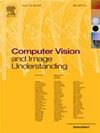DA2: Distribution-agnostic adaptive feature adaptation for one-class classification
IF 4.3
3区 计算机科学
Q2 COMPUTER SCIENCE, ARTIFICIAL INTELLIGENCE
引用次数: 0
Abstract
One-class classification (OCC), i.e., identifying whether an example belongs to the same distribution as the training data, is essential for deploying machine learning models in the real world. Adapting the pre-trained features on the target dataset has proven to be a promising paradigm for improving OCC performance. Existing methods are constrained by assumptions about the training distribution. This contradicts the real scenario where the data distribution is unknown. In this work, we propose a simple distribution-agnostic adaptive feature adaptation method (). The core idea is to adaptively cluster the features of every class tighter depending on the property of the data. We rely on the prior that the augmentation distributions of intra-class samples overlap, then align the features of different augmentations of every sample by a non-contrastive method. We find that training a random initialized predictor degrades the pre-trained backbone in the non-contrastive method. To tackle this problem, we design a learnable symmetric predictor and initialize it based on the eigenspace alignment theory. Benchmarks, the proposed challenging near-distribution experiments substantiate the capability of our method in various data distributions. Furthermore, we find that utilizing can immensely mitigate the long-standing catastrophic forgetting in feature adaptation of OCC. Code will be released upon acceptance.
DA2:单类分类的分布不可知自适应特征自适应
单类分类(OCC),即识别示例是否属于与训练数据相同的分布,对于在现实世界中部署机器学习模型至关重要。在目标数据集上调整预训练的特征已被证明是提高OCC性能的一个有前途的范例。现有的方法受到训练分布假设的约束。这与数据分布未知的实际情况相矛盾。在这项工作中,我们提出了一个简单的分布不可知自适应特征自适应方法(DA2)。其核心思想是根据数据的性质,自适应地对每一类的特征进行更紧密的聚类。我们依赖于类内样本的增强分布重叠的先验,然后通过非对比方法对每个样本的不同增强特征进行对齐。我们发现在非对比方法中训练随机初始化的预测器会降低预训练的主干。为了解决这个问题,我们设计了一个可学习的对称预测器,并基于特征空间对齐理论对其进行了初始化。基准测试,提出的具有挑战性的近分布实验证实了我们的方法在各种数据分布中的能力。此外,我们发现利用DA2可以极大地减轻OCC特征适应中长期存在的灾难性遗忘。代码将在验收后发布。
本文章由计算机程序翻译,如有差异,请以英文原文为准。
求助全文
约1分钟内获得全文
求助全文
来源期刊

Computer Vision and Image Understanding
工程技术-工程:电子与电气
CiteScore
7.80
自引率
4.40%
发文量
112
审稿时长
79 days
期刊介绍:
The central focus of this journal is the computer analysis of pictorial information. Computer Vision and Image Understanding publishes papers covering all aspects of image analysis from the low-level, iconic processes of early vision to the high-level, symbolic processes of recognition and interpretation. A wide range of topics in the image understanding area is covered, including papers offering insights that differ from predominant views.
Research Areas Include:
• Theory
• Early vision
• Data structures and representations
• Shape
• Range
• Motion
• Matching and recognition
• Architecture and languages
• Vision systems
 求助内容:
求助内容: 应助结果提醒方式:
应助结果提醒方式:


